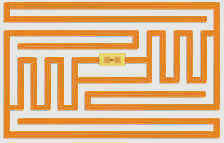An automaton capable of navigation and identification has been up around the pinnacle of robotics for a while now. The goal for many researchers is to create a robot that can be deployed in a home and perform meaningful tasks. It would be able to fetch a snack, or tidy up a room, or get a first aid kit in an emergency. This type of robot would have to be able to navigate through a home and recognize specific items. Navigation is getting dialed in, but identification is still a bit tricky.
Vision is a familiar way of identifying something. People do it all the time. It’s how you know not to drink from the bottle with a skull and crossbones on it and at the same time know you can drink from the bottle with the Coca-Cola logo on it. However, robot vision isn’t always as good at identification as human vision.
If you look at a television from the back or the side, you still recognize it as a TV. However, a robot cycling through photos on Robo Brain might come across tons of television pictures, but maybe they’re all from the front. The poor little robot can’t match the image it sees with any of the images in the database, and spirals into a depression and self-loathing.
Even if you assume that there are plenty of photos of televisions from the front, back, side, the other side, and even a few from super artsy-angles, it takes quite a bit of computing power for a robot to use vision for identification. Luckily, vision isn’t the only means of identification.
Radio frequency identification (RFID) tags are another way that robots can identify objects. Although less sophisticated than robot vision, RFID requires much less computing power and is infinitely cheaper.
Each individual item would have its own unique RFID tag that would emit a signal for the robot. The robot would pick up and follow an increasingly strengthening signal until it zeroed-in on the item is was supposed to retrieve. It doesn’t matter what angle a robot is when it receives the tag signal.
RFID isn’t as fancy as the vision recognition software Terminator uses, but it seems to be pretty effective. Until robot vision advances, RFID might be the most functional option for robot identification.
